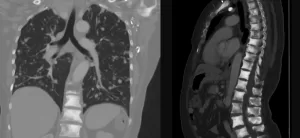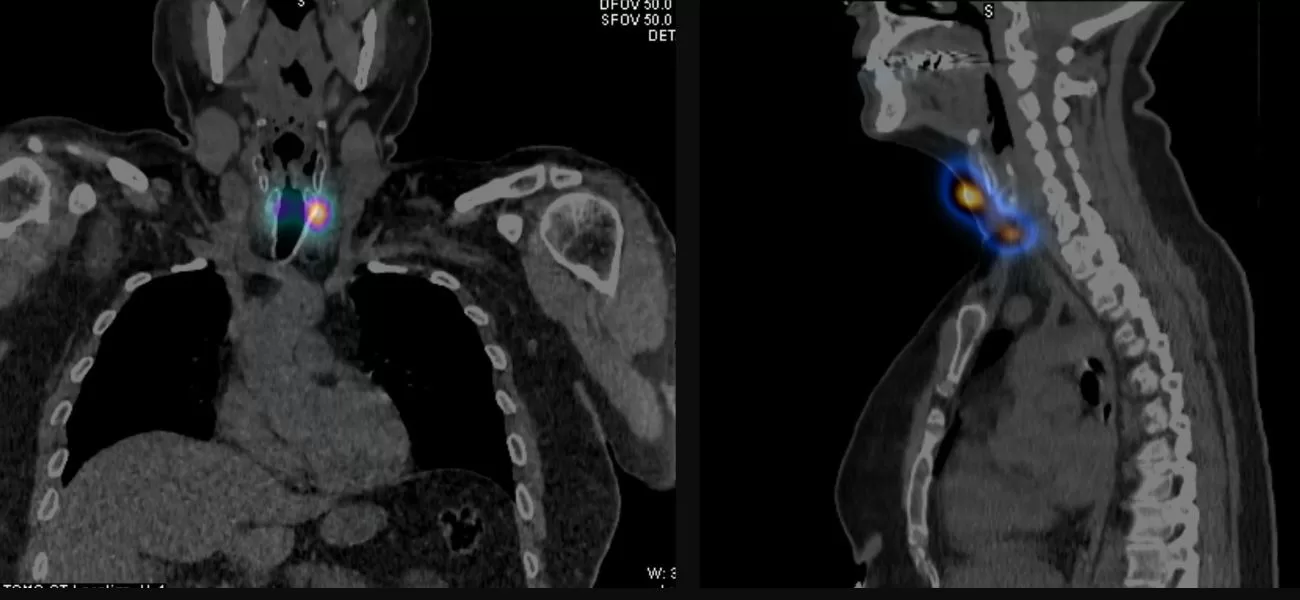If you have a thyroid nodule, the next step is finding out if it’s cancer. Most of thyroid nodules are not cancer, so how do you know?
There are some tests that will help:
1. Bloodwork
Thyroid cancer doesn’t really show on a bloodwork. However, if we are going to study your thyroid, we should get an idea of how it is working. Maybe you have another thyroid disease which does show on your blood tests. Sometimes, these conditions can increase the size of your thyroid and the likelihood of cancer.
So, the most common items in your thyroid bloodwork are:
- Thyroid hormone levels: will show if there is too much hormone (hyperthyroidism) or too little (hypothyroidism).
- Antibodies: some thyroid disorders are autoimmune. For example, Hashimoto’s disease, which shows TPO antibodies.
- TG marker or thyroglobulin: it doesn’t detect cancer, but it’s useful after they’ve removed your thyroid. In that case, your TG must be around zero. If it starts going up, cancer may be back.
- Calcitonin: this hormone will rise with one particular type of thyroid cancer (medullary type).
2. Ultrasound
Ultrasound works great for the thyroid. That’s because the thyroid is very close to the skin, so ultrasound waves can reach it easily. Using the ultrasound, your doctor will have an idea whether the nodule “looks bad” or not. We use a score system called TI-RADS, which goes from 1 to 5.
1 means: “it’s benign, nothing to worry about”. 5 means: “it’s cancer, for sure”.
In addition, ultrasound is great to check your neck lymph nodes and see if cancer has spread there.
Finally, we can use ultrasound to perform a biopsy of your nodule, which will tell us for sure if it’s cancer or not.
3. Getting samples of the tumor
There are two ways to take a sample: fine needle aspiration or a biopsy.
Fine needle aspiration
As the name suggests, this is about a thin needle that collects a sample from the nodule. Sometimes, the nodule will be too hard and nothing will come out. In those cases, we’ll need a full blast biopsy.
Biopsy
Means getting a “chunk” of the tumor. There are also several ways to do this:
- Core biopsy: you get a cylinder of the tumor using a thick needle.
- Removing the nodule through surgery.
- Removing half of the thyroid gland: the half containing the tumor, so that we can send it to the pathology department.
And what happens with the sample? Well, the pathologist studies the sample through a microscope, and will tell us whether there are cancer cells inside. It’s the most accurate way to diagnose cancer.
Sometimes, these tests will be enough for a diagnosis. But if your doctor thinks the tumor might have spread, you may need some extra tests:
4. Full-body CT
A good option to find distant metastases (hepatic, bone, lung metastases…).

5. Radioactive tracer
There are 2 uses for this test.
On the one hand, it allows us to discriminate “hot” nodules from “cold” ones. Hot nodules are those that “eat” the tracer (radioiodine); these are usually benign. In contrast, when the tumor doesn’t take the tracer, we say it’s cold; those can be both benign or malignant.

On the other hand, a radioiodine scan is useful after surgery, for papillary and follicular types. Normally, the thyroid gland will eat all the tracer. However, if we remove it, any cell that “looks” similar to the thyroid will eat it, no matter where it is. Hence, we use it to find distant metastases.
For instance, imagine there are a few malignant cells, say, in your lung; they will light up like a bulb after taking in the tracer.
6. Genetic testing
In some cases, your doctor will suspect there is a genetic factor in your cancer, like a mutation that makes you more prone to thyroid cancer. This is especially true for medullary type carcinomas. Some of these mutations/genes are:
- BRAF
- RET/PTC
Therefore, if you have one of these mutations, it’s better to find out. That way, we can treat the tumor with “targeted therapies”.
Also, your family may need testing, just in case, to make sure they don’t have thyroid cancer, too.
If you want to find out about how to treat thyroid cancer, check this one.
For thyroid cancer types, click here.
Leave a Reply